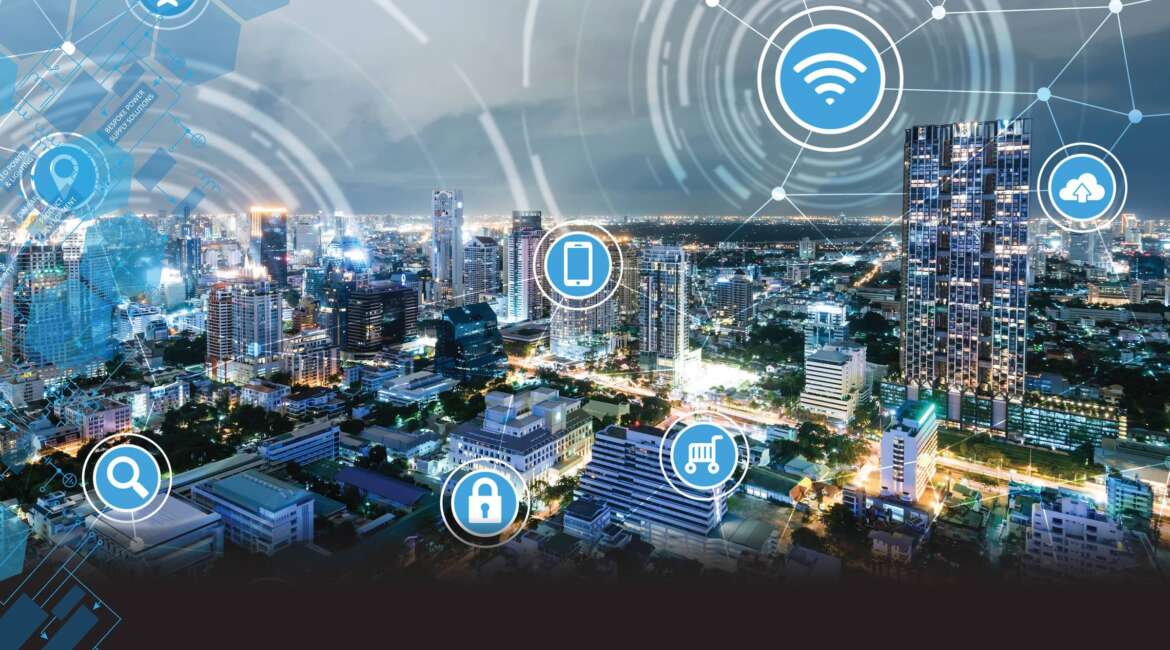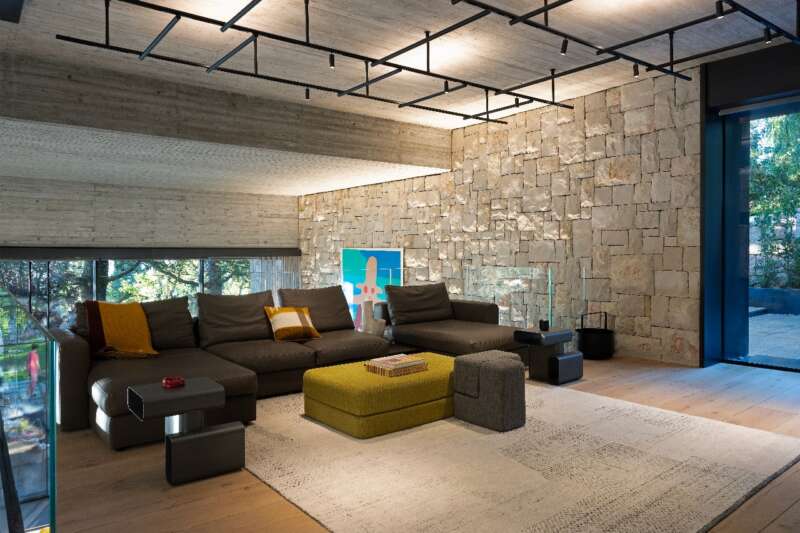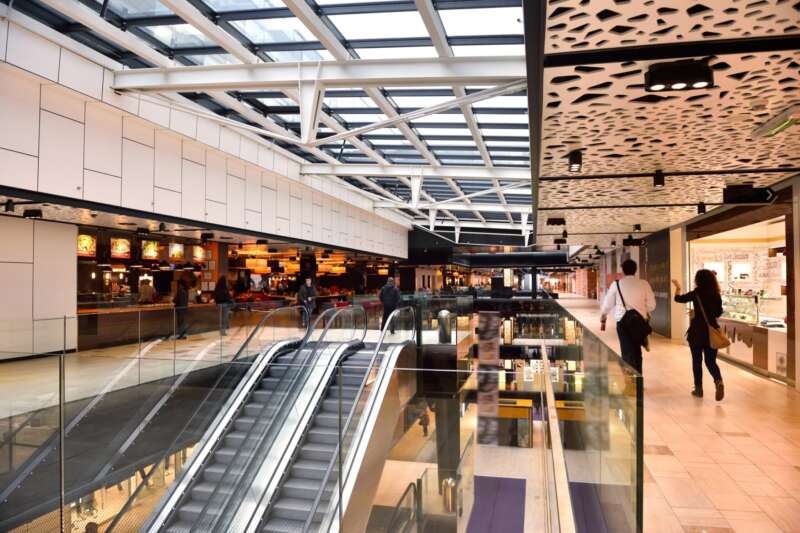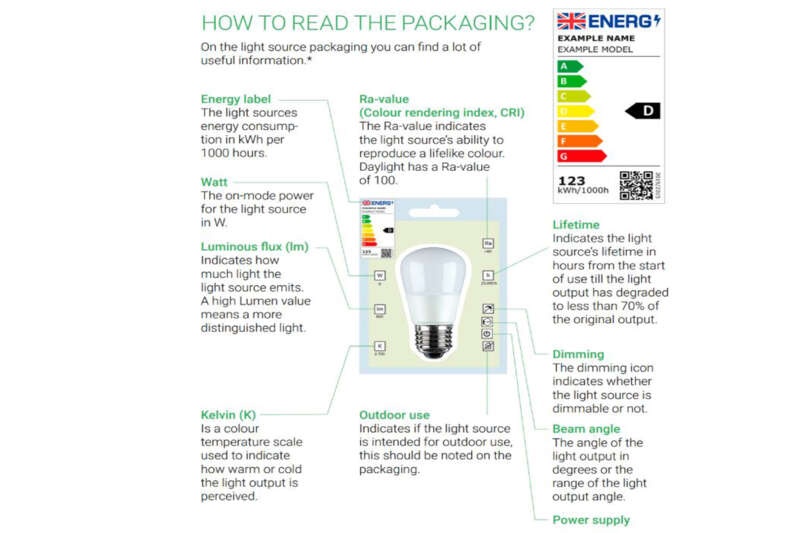Smart home tech is becoming ever-more-prevalent, as consumers bring increasing numbers of connected devices into their lives. Larger buildings, including office blocks and shopping centres, are also seeing an influx. These initiatives are driven by the consumer or the building owner, tenant or manager. When you think about buildings as part of larger neighborhoods, which in turn form part of larger towns and cities, these initiatives are being driven from the bottom of the pyramid. Conversely, broader smart city initiatives tend to be driven from top down, by local or national government bodies, often working with utility companies.
The general aim of smart cities is to make urban areas more efficient, more sustainable and more attractive to residents and visitors. But a report from ABI found that these top-down-driven smart city initiatives haven’t fully delivered on their aims, despite projects such as smart street lighting and car- or bicycle-sharing schemes being successful in places. This is because bigger projects that require greater integration – perhaps upgrading a city’s power-distribution infrastructure or overhauling its healthcare services – often run into the old barriers of cost and complexity. The report’s authors suggest that linking smart home (ie bottom-up) and smart city (top-down) projects could benefit both sides.
Other factors are also driving the development of smarter buildings and cities. Legislation, such as the US Commercial Building Initiatives and the EU’s Energy Performance of Buildings Directive (EPBD), is increasing localized focus on limiting energy usage and greenhouse gas emissions. When you consider that commercial premises account for more than a third of US electricity consumption, it’s easy to see why these buildings in the spotlight.
And with the right push from the businesses, local authorities and governments who have an interest in sharing data to monitor and control the built environment, we’re likely to see an increase in smart buildings that play a part in realizing truly smart cities. Let’s look at a couple of examples of how smart building initiatives can add up to create smarter urban environments and solve pressing challenges.
The renewable energy issue
If we’re to significantly increase the amount of energy we generate from renewables, our power grids themselves will need modernizing to accommodate it. The major challenge is to balance supply and demand, thereby avoiding outages when consumers’ thirst for electricity is greater than what the sun, wind and other renewables are generating at that moment in time.
One of the biggest changes required to power grids is being driven by the decentralization of production. Traditionally, grids have had a fairly straightforward architecture that distributes power from large-scale generators to cities, then to neighborhoods and finally to each building. To keep things running smoothly, the utility companies increase or decrease production to match fluctuating demand from consumers.
Once you start feeding in energy from individual buildings, things become more complicated. Predicting the output of a large hydro or fossil fuel generator can be done relatively reliably. But the output of a small photovoltaic installation on a residential roof can be affected by localized weather conditions. As a result, maintaining that delicate balance of supply and demand across the whole grid becomes hugely more complex. And while the existing infrastructure is capable of handling small amounts of variable renewable energy, when this share grows, the companies involved in operating our power grids need to look at different solutions.
Smart buildings: helping tackle the power grid challenge
You might be wondering what all of this has to do with smart buildings. With more of these buildings being fitted with solar panels, so they are contributing to this power grid management challenge. But the good news is that as well as being part of the problem, they also provide new solutions. These include energy storage, smart appliances, electric vehicle charging and demand-response management, using connected thermostats.
While these technologies should help homeowners, tenants or building managers to drive down their energy bills, the bigger impact could ultimately be for power companies, who can harness these capabilities to address the challenge we’ve been outlining. And this is why utility businesses could well become a major player in the push to turn more buildings into smart buildings. For example, they could offer consumers reduced tariffs in return for control over when they use their appliances, charge their electric cars or consume the stored energy in their domestic battery.
Smarter care for an ageing population
The power grid isn’t the only place where smarter buildings can play a role in creating smart cities. Care for the elderly is another. With an ageing population, pressure on care homes and other specialized medical facilities is growing, and the bill for providing increased amounts of care is typically picked up by a city’s authorities. At the same time, many individuals are keen to remain in their own homes and stay independent for as long as possible. These are some of the reasons why e-health and domestic assisted living solutions should be important parts of smart city strategies. And in a lot of cases, the connected home is the perfect touchpoint.
Possibilities include linking up people’s lighting and appliances to their care providers, so that they can ensure the person is remaining mobile. Wearables that detect if a person falls over are another example. Add smart locks to the front door, to make it simpler for people with reduced mobility to get care. And provide in-home access to doctors and other medical staff, via an easy-to-use tablet or phone app.
All of this can make it easier for elderly people to remain in their own homes while receiving tailored, high-quality care. And it’s why we expect to see city authorities starting to throw their weight behind these healthcare platforms or subsidizing the technology, instead of expanding the provision of conventional residential care.
Linking smart buildings to create smarter streets, neighborhoods and cities
By joining forces, residents and businesses can extend the value of their smart home or smart building investments, thereby helping create smart cities from the bottom up. Take security as an example. Vivint’s Streety app provides a platform where neighbors can share access to their residential security cameras. Ring offers a similar service, which also enables police to share data. Consequently, a row of smartly secured houses becomes a smartly secured street, several smartly secured streets become a smartly secured neighborhood, and so on.
This pooling of resources can work in other areas, too. Australian ShineHub is a marketplace for solar energy, helping companies and homeowners to feed excess solar energy into their local grid, or buy electricity from clean sources. Elsewhere, Pavemind is one of a number of apps that enable people to rent out their residential parking spaces, which can help cut down on the number of vehicles driving around in search of a space.
Greater than the sum of their parts
These examples help highlight the many different ways the value of smart building technology can stretch far beyond the walls of the home, office or factory where it’s installed. From helping address a major power grid challenge brought on by the increase in renewable energy, to improving care for the elderly, encouraging the spread of smart buildings and linking together these capabilities promises to provide an effective way for government bodies and utility companies to move towards their goal of truly smart cities. It may not be the approach they’ve traditionally taken, but it could well help address some of the hurdles that traditional top-down smart city projects have run into.








